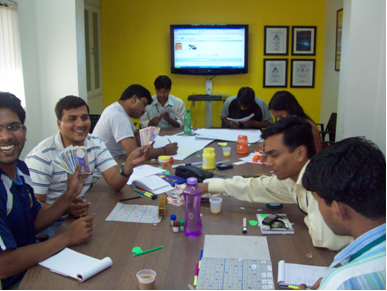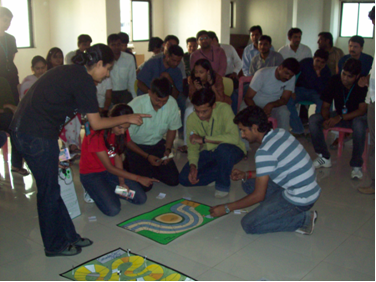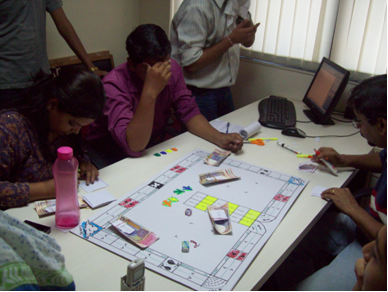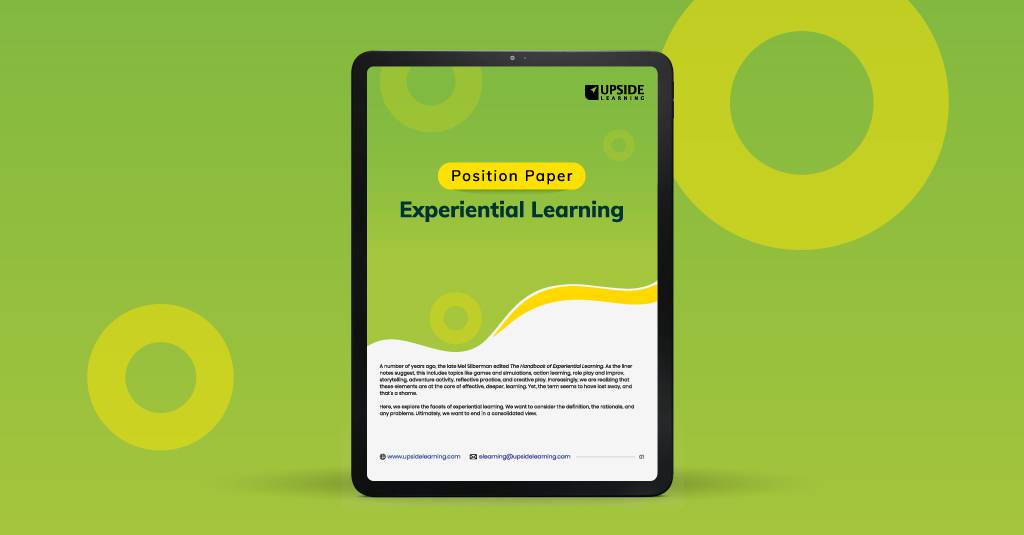Traditionally at Upside, we’ve always used one Saturday every month for training. Typically, this training is designed for functional groups and is followed by a creative activity where there is cross-functional participation.
The Upside Learning staff wanted a change from routine functional training which could be boring. So we decided to introduce a fun activity for this training day. But How?
Several options were considered before we decided we needed an exercise that would challenge our fellow team-members. We’ve been trying to inculcate a culture that’ll inculcate innovation in our creations, and in line with the buzz around learning games, we zeroed in on a game design exercise.
The idea was quite simple, set up teams, give them a limited set of physical resources and set out a task – design and build a board game in less than five hours.
Easy? Definitely not, as teams realized during day-long experience.
Started out at 10:00 AM, when I gave the teams a (very) brief talk about five fundamental elements to be found in most board games.
| Talked about: | |
| 1. | Environment |
| 2. | Objects |
| 3. | Rules/Rulesets |
| 4. | Reward/Punishment Win/Lose |
| 5. | Uncertainty |
10:30 AM the resource kits were handed out to the six teams. They had till 3.30 PM to come up with their own board game. An evaluation team was also created, tasked with playing the games after they’d been created.
The teams broke off to their work areas. Over the next five hours we saw the teams make a concerted effort to design and develop the games.
Somewhere along the way, it seems teams found a way to have lunch – the sustenance – behind every design and development effort.

As 3.30 PM came around, some teams were sitting pretty having completely created their game and were play-testing it. While others were finishing their games, having play-tested them as prototypes. (As an aside, I noticed that teams that prototyped had more complex games than the other teams. Not that this complexity help any of them win) What followed was the presentation of the games created by each team.
The games were laid out on the floor, and team members demonstrated the game play, while the leader commented on what the players were doing and why. This presentation turned out to be quite interesting, as the early leaders emerged during this stage itself.

Once all six teams had presented, the floor was thrown open for all participants to play each other’s games. At the same time, the evaluation team also participated in game play – lots of fun.

Teams discovered some rules don’t work; that there are situations that they never accounted for in their designs. In one case, the team found out certain individuals played their games in ways that was not planned for – the players created a new game mechanic not intended by the game designers.
After playtime was done, the evaluation team met briefly to consider the best game. The winner was Sneha’s team with their strategy based board game “Reach Home First”. The evaluation team found this to be engaging, simple to understand and play. The key is SIMPLICITY, in all five elements of the game. The winning team seemed to have captured this in their board game; much credit to them
We were considering making the games available as PDFs; write us a comment if you’d download those.














